Learning Center
Fingerboard
Horizontal Angle
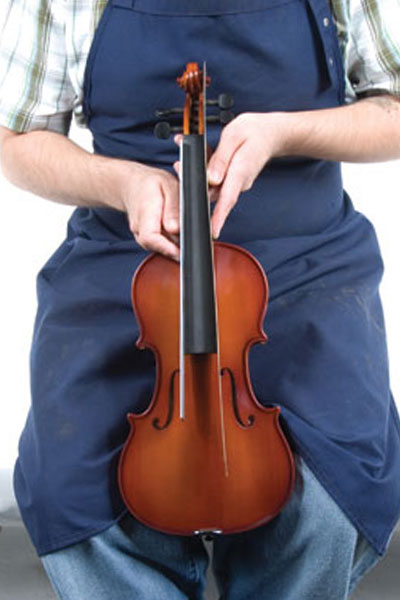
The horizontal and vertical angles of the fingerboard are largely determined by the neck angle.
These angles are crucial to the playability and tonal qualities of stringed instruments.
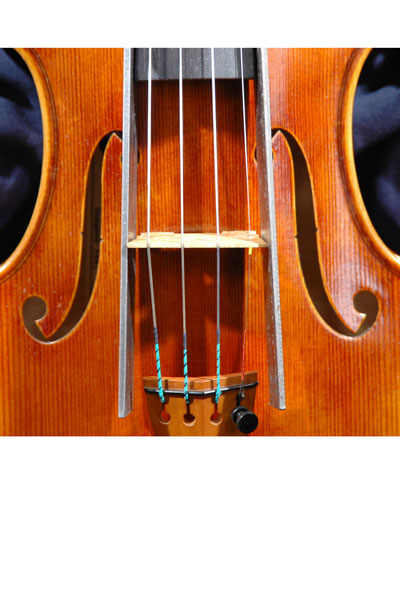
The horizontal angle is measured by using two steel rulers held firmly against the neck.
If the bridge is perfectly centered between the f-holes, the angle is correct.
Vertical Angle
One way to measure the vertical angle is with two rulers. This measurement is referred to as the projection point.
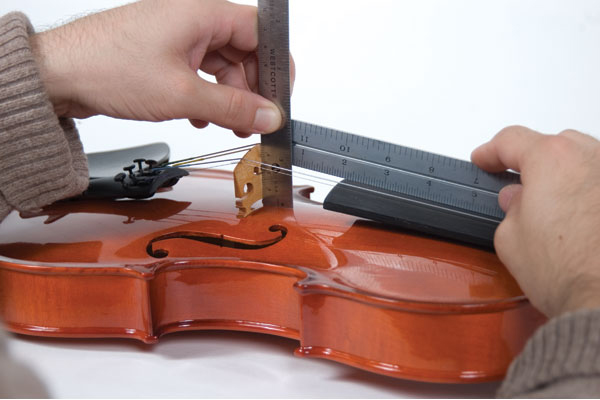
If the vertical angle or projection point is too low, the bridge and strings will be too low. As a result, the sound will be small and lack projection caused by too little tension on the bridge.
| Correct Measurements (Size 4/4) | |
|---|---|
| Violin | 26 - 28mm |
| Viola | 31 - 33mm |
| Cello | 79 - 81mm |
At Southwest Strings, instruments without standard neck angles are discarded.
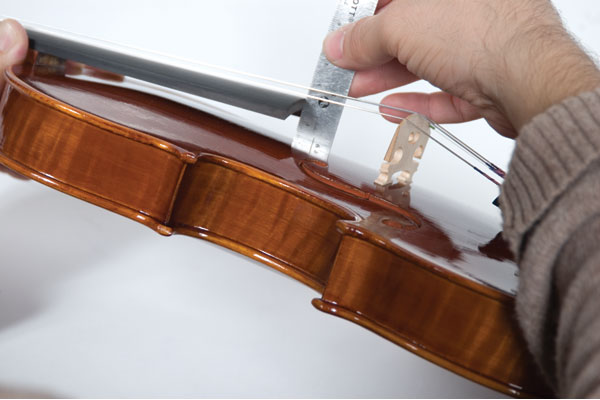
The vertical angle may also be measured at the highest point of the belly and at the end of the fingerboard.
If the vertical angle is too high, the bridge and strings will be too high. Thus, the sound will be harsh and shrill caused by too much tension on the strings.
| Correct Measurements (Size 4/4) | |
|---|---|
| Violin | 19 - 22mm |
| Viola | 22 - 24mm |
| Cello | 62 - 64mm |
Relief & Radius
Relief
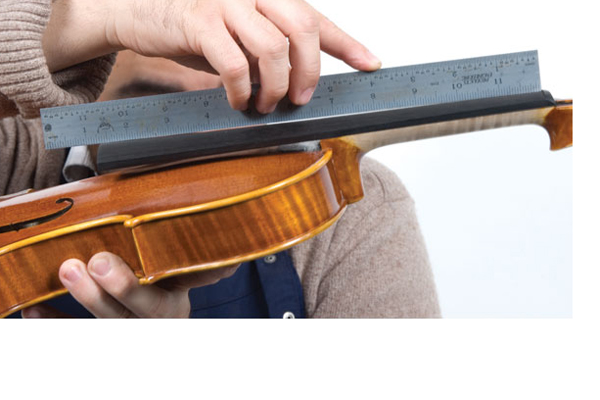
The highest points on the fingerboard are at each end. The amount of dip between these points is referred to as relief.
Relief allows the strings to vibrate freely, thus contributing to good projection and playability.
Relief along the E string is less than that along the A, D or G. The relief along the G string is the greatest respectively.
Radius
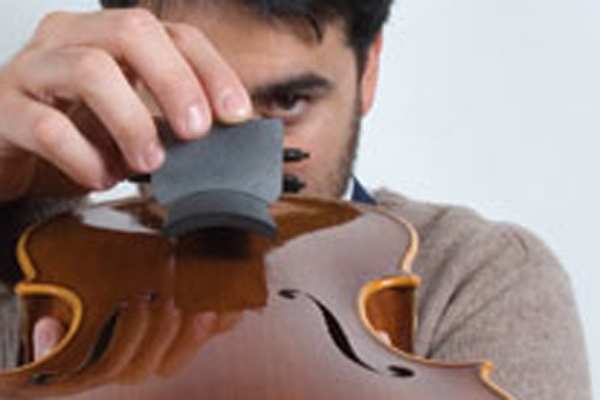
The radius of the fingerboard must be symmetrical, uniform in thickness, and equidistant from the top plate.
Bridge crown measurements are taken from the radius of the fingerboard. If the radius is incorrect the bridge will be incorrect.
At Southwest Strings, all fingerboards are planed in house for perfect dip and accurate radius.

